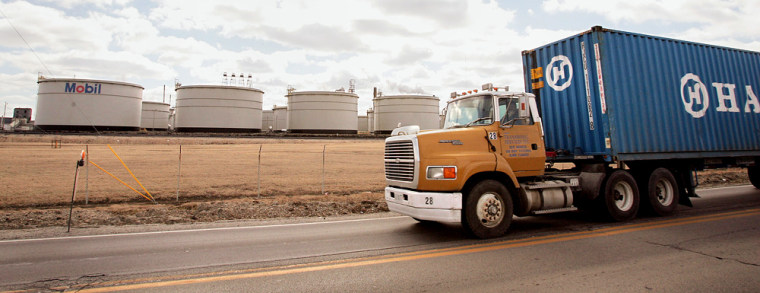The switch to new ultra-clean diesel fuel is going smoothly and supplies should be readily available at pumps when the rules take effect on Sunday, U.S. officials said Tuesday. That will mean less pollution, fewer health issues and possibly the start of a renaissance for diesel cars in the United States.
In a move to cut precursors to smog and tiny particles spewed by diesel-burning engines, the government has required U.S. refiners to make fuel with less than 15 parts per million of sulfur for use in on-road vehicles beginning Oct. 15.
That’s 97 percent less sulfur than current rules, which allow up to 500 parts per million of sulfur.
“That black puff of smoke will be history,” said Frank O'Donnell, president of the group Clean Air Watch.
Guy Caruso, head of the Energy Information Administration and the government’s top energy forecaster, said that “from all accounts, (the transition has) been going extremely well.”
There are about 14 million diesel-powered trucks and buses in the United States. As a part of the regulations, big diesel engine makers like Cummins Inc. are now able to incorporate pollution control equipment because there's much less sulfur to hamper the components.
“Cleaner diesel fuel will immediately cut soot emissions from any diesel vehicle by 10 percent,” the environmental group Natural Resources Defense Council and the industry group Diesel Technology Forum noted in a joint statement. “But when combined with a new generation of engines hitting the road in January, it will enable emission reductions of up to 95 percent.”
“A new 2007 diesel truck will emit just one-sixtieth the soot exhaust of one produced in 1988,” the groups added.
5 cents more a gallon
The new rules will add less than 5 cents per gallon to diesel prices, which averaged about $2.54 a gallon nationwide last week, the EIA said.
Margo Oge, director for the Environmental Protection Agency’s transport and air quality office, said that “we expect wide availability of (clean diesel fuel) across the country at numbers significantly higher than we had expected.”
U.S. refiners currently produce about 2.4 million barrels per day of the new diesel, enough to satisfy some 90 percent of on-road demand, Oge said.
EPA Administrator Stephen Johnson called the new standard ”the single greatest achievement in clean fuel since lead was removed from gasoline” in the 1970s and said it would provide about $150 billion in health benefits every year.
That includes preventing 20,000 premature deaths and tens of thousands of respiratory ailments like bronchitis and asthma, the EPA said.
Will consumers buy?
Diesels now make up just a small percentage of the consumer vehicle market, but clean air activists and the EPA predicted the new rules and technology would change that.
“This new fuel will help to open up markets to clean diesel passenger cars, pickup trucks, and delivery vehicles that are 30 percent more efficient than current fleets with similar reductions in carbon dioxide emissions,” the EPA added in a statement. “In addition to the fuel economy and carbon emission benefits, a new fleet of clean diesel vehicles will have lower maintenance costs, longer engine life, and typically lower fuel costs.”
The rules were finalized by the Clinton administration and later implemented by the Bush administration after a brief delay.
Big refining lobbying groups like the National Petrochemical and Refiners Association and the American Petroleum Institute had sued the EPA to stop the rules, saying they were too costly and could spur supply shortages.
A federal court rejected those claims in 2002, which allowed the rules to proceed.
API President Red Cavaney said the rules were “arguably the most costly and complex change ever experienced in the U.S. fuel market,” but said the switchover had been smooth so far.
The refining industry has invested more than $8 billion to comply with the rules, the API said.
